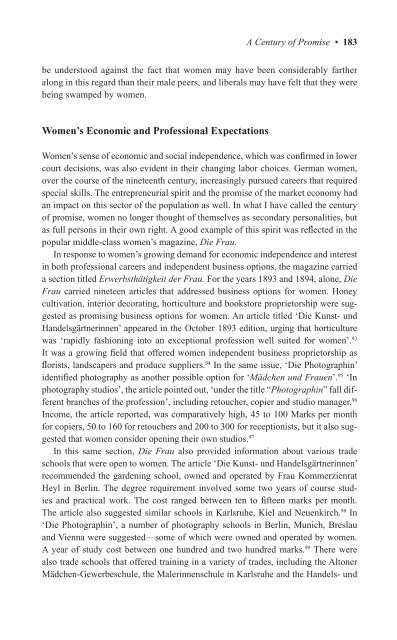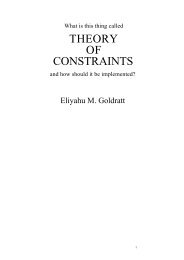Making of a German Constitution : a Slow Revolution
Making of a German Constitution : a Slow Revolution
Making of a German Constitution : a Slow Revolution
You also want an ePaper? Increase the reach of your titles
YUMPU automatically turns print PDFs into web optimized ePapers that Google loves.
A Century <strong>of</strong> Promise • 183be understood against the fact that women may have been considerably fartheralong in this regard than their male peers, and liberals may have felt that they werebeing swamped by women.Women’s Economic and Pr<strong>of</strong>essional ExpectationsWomen’s sense <strong>of</strong> economic and social independence, which was confirmed in lowercourt decisions, was also evident in their changing labor choices. <strong>German</strong> women,over the course <strong>of</strong> the nineteenth century, increasingly pursued careers that requiredspecial skills. The entrepreneurial spirit and the promise <strong>of</strong> the market economy hadan impact on this sector <strong>of</strong> the population as well. In what I have called the century<strong>of</strong> promise, women no longer thought <strong>of</strong> themselves as secondary personalities, butas full persons in their own right. A good example <strong>of</strong> this spirit was reflected in thepopular middle-class women’s magazine, Die Frau.In response to women’s growing demand for economic independence and interestin both pr<strong>of</strong>essional careers and independent business options, the magazine carrieda section titled Erwerbsthätigkeit der Frau. For the years 1893 and 1894, alone, DieFrau carried nineteen articles that addressed business options for women. Honeycultivation, interior decorating, horticulture and bookstore proprietorship were suggestedas promising business options for women. An article titled ‘Die Kunst- undHandelsgärtnerinnen’ appeared in the October 1893 edition, urging that horticulturewas ‘rapidly fashioning into an exceptional pr<strong>of</strong>ession well suited for women’. 93It was a growing field that <strong>of</strong>fered women independent business proprietorship asflorists, landscapers and produce suppliers. 94 In the same issue, ‘Die Photographin’identified photography as another possible option for ‘Mädchen und Frauen’. 95 ‘Inphotography studios’, the article pointed out, ‘under the title “Photographin” fall differentbranches <strong>of</strong> the pr<strong>of</strong>ession’, including retoucher, copier and studio manager. 96Income, the article reported, was comparatively high, 45 to 100 Marks per monthfor copiers, 50 to 160 for retouchers and 200 to 300 for receptionists, but it also suggestedthat women consider opening their own studios. 97In this same section, Die Frau also provided information about various tradeschools that were open to women. The article ‘Die Kunst- und Handelsgärtnerinnen’recommended the gardening school, owned and operated by Frau KommerzienratHeyl in Berlin. The degree requirement involved some two years <strong>of</strong> course studiesand practical work. The cost ranged between ten to fifteen marks per month.The article also suggested similar schools in Karlsruhe, Kiel and Neuenkirch. 98 In‘Die Photographin’, a number <strong>of</strong> photography schools in Berlin, Munich, Breslauand Vienna were suggested—some <strong>of</strong> which were owned and operated by women.A year <strong>of</strong> study cost between one hundred and two hundred marks. 99 There werealso trade schools that <strong>of</strong>fered training in a variety <strong>of</strong> trades, including the AltonerMädchen-Gewerbeschule, the Malerinnenschule in Karlsruhe and the Handels- und




